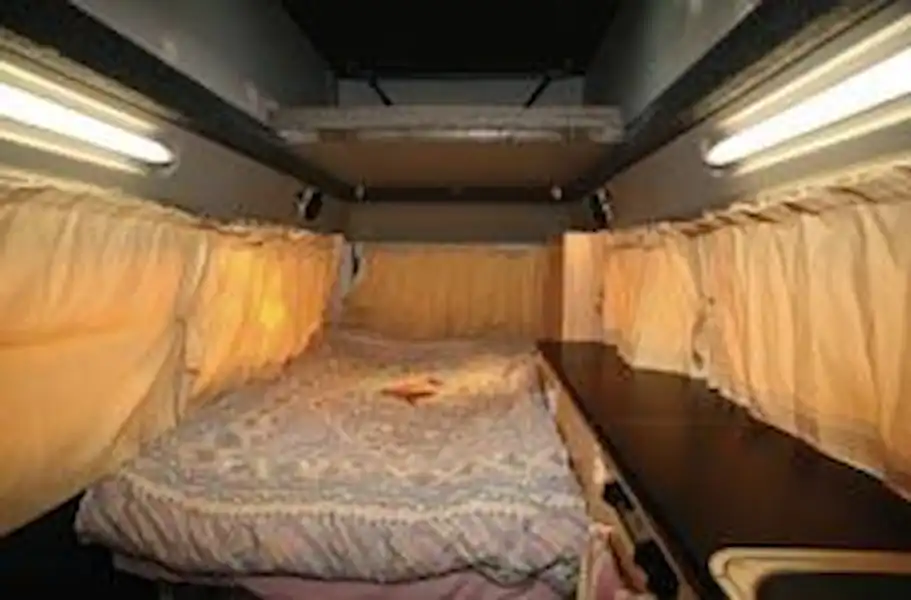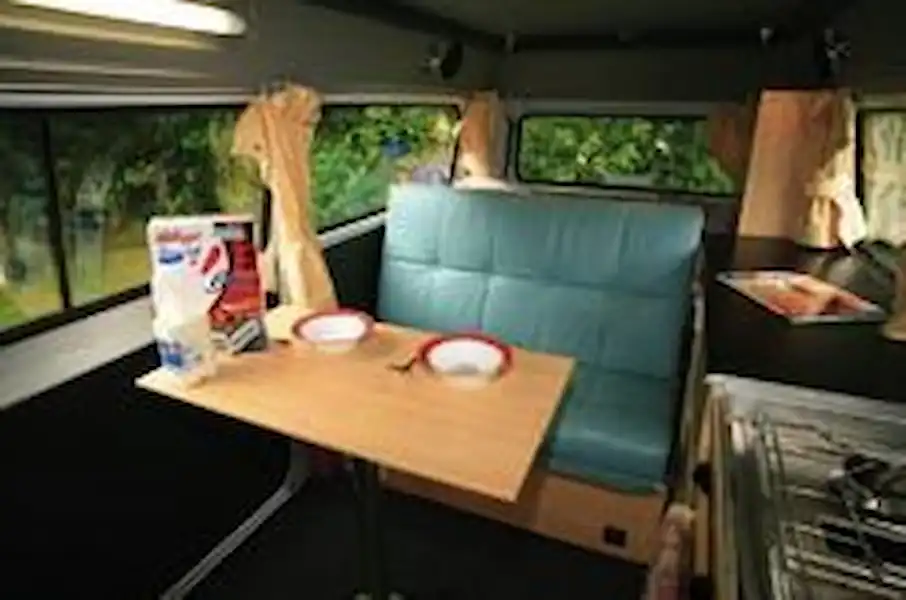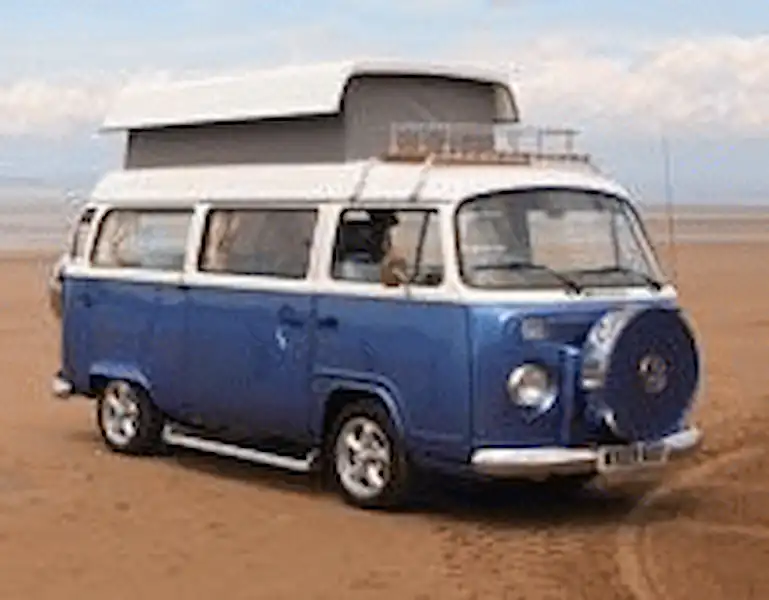Key Features
| Model Year | 2009 |
| Class | Fixed Roof |
| Base Vehicle | Volkswagen T2 |
| Price From (£) | 23,199 |
| Length (m) | 4.38 |
| Berths | 4 |
| Belted Seats | 4 |
| Main Layout | Front Lounge |
At a glance
Full review
MY best friend at school had a 1972 VW Devon in duo-tone green and white.It looked very nearly as pretty as the brand-new Danbury you see here but it certainly didn’t have lowered suspension, alloy wheels or leather trim.
The term ‘bling’ was three decades away and a camper then was £3000, not the £30,000-plus of today’s equivalent. Who’d have believed, though, that you’d still be able to buy a brand-new Type 2 – still looking so very similar – some 37 years later?
The fact that you can is down to the Brazilians (who build the basic panel vans) and the Bristolians (who import and convert them).
And just as in 1972, the best layout for a Type 2 camper places the kitchen down one side and features a ‘rock n roll’ seat/bed system just forward of the rear engine.
As Brazil drives on the right and all new Type 2s arrive in the UK in LHD form, these days the sliding door is on our offside and the kitchen on the nearside – a mirror-image of what you might expect. But the stainless steel sink and LP Tasman hob and grill don’t look so very different from their ‘70s equivalents. And anyone familiar with classic Type 2 campers will feel right at home in this one.
Or will they? Being brand-new, there’s no patina – everything is shiny and new. There are concessions to the 21st century, too, like the plumply upholstered VW Golf-style cab seats, heated front and rear screens, CD/radio with rear speakers, front head restraints, removable carpet and compressor-type fridge.
But is full leather trim just going a bit too far? After all, campers were always family workhorses, doing the school run one minute, shopping the next, then carting the entire family (kids, dogs, bucket and spades, the whole caboodle) off camping at the weekend.
The leather – available in a wide choice of colours, most of which would probably have been a better match for the bright blue exterior – is part of the SE trim level.
Danbury campers come in Picnicker, Classic or SE spec, with this flagship version also adding lowered suspension, the front dummy spare wheel cover, chrome bumpers, mirrors and headlight surrounds and a very ‘period’ overcab roof rack.
It certainly looks the part – but then so it should. By the time you’ve added the rising roof (£1949, or almost £3000 with roof bed and sunroof, as tested), right-hand drive (£1000) and a few other goodies, this SE was wearing a near-£40k price tag.
That’s a lot for a camper with 1970s-style equipment – no air-con, no power steering, no electric windows, no central locking, no airbags and no ABS. But then you won’t be buying the Rio SE on value for money.
If you fall for its charms then probably nothing else will do – except perhaps the true original VW camper, a restored split-screen from the ‘60s. Incredibly, fashion has forced the prices of those so high that you might spend even more than the cost of this 09-plate Danbury on one.
And while living aboard the Rio was compromised compared with the Bilbo’s Celex SE that we also took to Burham-on-Sea, it was a surprisingly comfortable camper to use.
The biggest snag is that the front seats don’t swivel, so you’re really stuck with just using the rear settee on site. But the conversion is well finished and the marine ply furniture first rate (with smart contrasting black worktops too). The bed is comfy and there’s rather more storage than you’d expect, too.
The traditional pop-top roof is light enough to raise but fiddly to lower and without the optional sunroof it could be very gloomy and stuffy up top as there are no mesh panels or tent-like windows as in the more modern elevating roofs fitted to the Wellhouse and Bilbo’s VWs tested this month. Lighting lower down is excellent, however, with two ginormous striplights and a pair of swivel reading lamps.
Verdict
The Danbury is one of a kind, a timewarp camper that provides (slightly) modernised 1970s VW themes for today’s buyer. If you want a blinged up version like our test ’van it’ll cost a packet – but we’d go for less spec at more sensible pricing and enjoy a unique piece of motoring nostalgia. Nothing else gives you more smiles
per mile.
This review was first published in the October 2009 issue of Which Motorcaravan magazine.
Expert motorhome advice to your door!
Why not subscribe to one of our fabulous magazines and get expert advice, travel ideas, technical help and all the latest news for your motorhome and your motorhome adventures!
Want to know more about MMM magazine?
Every month MMM has articles written by motorhomers who have been there and done it, from great UK and European (and further afield) tours, campsite reviews, owners' reports and DIY projects among other things. MMM's tests, reviews and expert buying guides are not to be missed. MMM's technical advice is a must and includes everything from weekend jobs to longer-term DIY projects. And much more!
About MMM magazineWant to know more about What Motorhome magazine?
Every issue of What Motorhome magazine provides essential buying advice for anyone looking to buy a new motorhome or campervan or upgrade their existing model. With a pedigree of over 30 years of offering the best motorhome and campervan buying advice, every issue of What Motorhome includes more new motorhome and campervan reviews than you will find in any other magazine.
About What MotorhomeWant to know more about Campervan magazine?
Campervan is the exciting monthly magazine that will give you all the inspiration you need to explore the world in your campervan. Every issue is packed with real-life campervanning experiences, inspiring travel ideas in the UK and further afield, the best campsites to stay on, campervan road tests and reviews of the latest models, and much more!
About Campervan magazine














